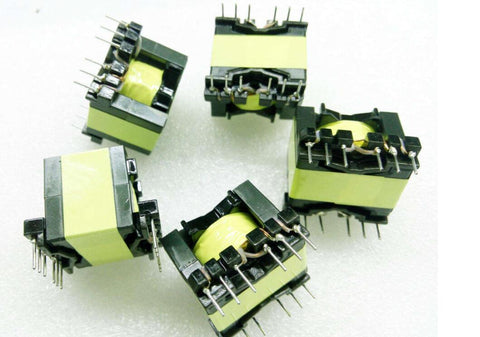Inverters are electrical devices that are used to convert direct current (DC) to an alternating current (AC).In the previous post we discussed the designing of an inverter circuit. In this post, we will focus on the working principle of an inverter.

How Does an Inverter Work?
We will divide this answer in parts for a better understanding.
- How Does An Inverter Help in Cases of Power Cuts?
It is not the job of an inverter, but a battery to store electricity. The main purpose of an inverter is to convert the AC power from power stations into DC power, and store it in the batteries. Why can’t you store this power in the available AC form? The answer to this question is that batteries get charged only by DC power, and not by AC. Now to run different appliances, the DC power stored in the batteries is required to be converted to AC power. This task is performed by inverters.
- What Does An Inverter Do When Mains Is Available?
Most of us think that an inverter is only operational when there are power cuts. On the contrary, an inverter is a device that is working continuously. How? For example, there are no power cuts and the mains power supply is available. In such case, an inverter uses this supply to charge its batteries, which can later be used in case of power cuts. When the batteries are completely charged, the inverter no more gives supply to the batteries, and runs your appliances on a bypass mode. When not in use, batteries tend to discharge slowly. Again inverter switches its role to charge them back.
- What Does an Inverter Do When Mains are Not Available (Power Cuts)?
Now, most of us know this part of the operation of an inverter. When there are power cuts, an inverter switches itself from mains mode to the back up mode. In this mode, the inverter uses the charge stored in the batteries to run different appliances. While the inverter switches its mode, the appliances that are running stop for few seconds. After a gap of few seconds, they restart on the back up mode. This change over time is quite large in inverters. This might result in losing some unsaved work on your PCs. To avoid this, you might want to use uninterrupted power supply (UPS), which has a very less change over time in milliseconds.
Automation in an Inverter
Inverter consists of a number of different circuits, which are responsible to sense and handle several situations while an inverter is in a stand by or running mode. These sections are referred to as automation sections, and they respond to conditions such as:
- Over charge
- Overload
- Low battery
- Over heat
Based on the situation, this section switches the battery in a suitable mode either switch OFF mode or charging mode. LEDs and alarms are provided in this section, which notify the operator about the different conditions and situations. In some advanced inverters, these conditions are displayed with the help of LCD screens.
Applications of an Inverter
Inverters are used in a wide range of applications. Some of the many applications include:
- Electroshock weapons
- DC power source usage
- Electric motor speed control
- Uninterrupted Power Supply (UPS)
- HVDC power transmission
- Induction heating

Related Posts:
2.Differentiating Factors between Standard and Custom Transformers
4.What’s the Difference Between SMD and NSMD?
